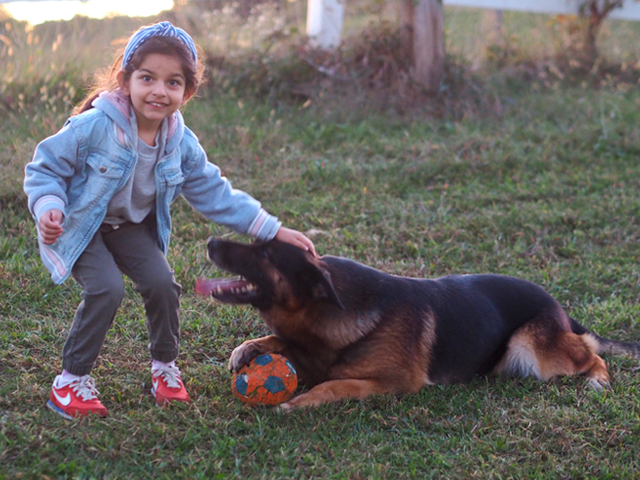The Ride Begins to Tip
There is a ride at the amusement park. It creaks. It lurches. And suddenly, it starts to tip.
It was built to thrill, to carry people safely through moments of elevation and drop. But the structure is compromised. The bolts strain, the cables shudder, and the ground below starts to quake.
Then, one man leaps up onto the railing. He knows he cannot stop the collapse alone, but he acts anyway. He locks his feet, braces his body, and holds on.
Others see him and follow. A crowd gathers, grasping the metal frame until, slowly, the ride steadies. The danger passes.
Had it not been for that one man, it would have ended very differently.
The Ride Is Our Breed
That ride is our breed, the German Shepherd Dog.
A century of selective breeding built it for service, utility, and courage. Yet the foundation is shaking beneath us.
Our ride is tipping because we have narrowed the structure that once held it upright: the gene pool.
When only the same few studs are bred, when fashion and reputation replace evaluation and diversity, the structure weakens. Each year we breed to fix the mistakes of the previous one, believing the next litter will redeem the last. But each generation only tightens the spiral.
“Your boos mean nothing because I’ve seen what makes you cheer.”
The applause for the famous sires and their progeny often drowns out the quiet truth: a breed cannot thrive on celebrity genetics alone.
How We Got Here
Overuse of popular studs has made the gene pool dangerously narrow. It’s not a conspiracy; it’s a convenience. It’s easier to repeat what wins than to question what works.
But as I wrote in “Dog Breeding Secrets: Strength Through Thoughtful Outcrossing”:
“The purpose of outcrossing in a breed like the German Shepherd isn’t to chase novelty. It’s to preserve function. By widening the gene pool, we aren’t changing the breed; we’re reinforcing it.”
When we avoid bringing in working bloodlines: dogs selected for stamina, nerve, and real-world usefulness, we sever the connection to the very instincts that made this breed extraordinary.
Our gene pool now looks less like a river and more like a pond: pretty on the surface, stagnant beneath.
The Breeder’s Burden
In “Bridging the Divide: Crossbreeding Working & Show Lines”, I argued that the split between the working and show worlds isn’t irreparable. But bridging that divide takes courage, patience, and humility.
We must stop believing that conformation alone will save us.
And as I wrote in “Essence of the German Shepherd Dog”:
“Form without function is hollow. Beauty without purpose is vanity. The German Shepherd is meant to move, to serve, to think, and to endure.”
We, the enthusiasts are the stewards of this legacy. And stewardship sometimes means standing alone while others look away.
How to Steady the Ride
1. Expand into Working Lines
Bring the working dogs back into the equation. Use them not as a novelty but as a long-term investment.
In the T-Litter at Nummer Eins, we deliberately stepped outside the fashionable lines. We chose a strong working male to reintroduce stamina, grip, and recovery into the line while maintaining temperament, health and longevity.
That decision was not for instant acclaim — it was for the next decade.
2. Broaden the Breeding Base
Don’t rely on a single “hero” dog. Build families. Use multiple males, smaller kennels, forgotten but solid producers. Track five or six generations, not just the next one.
A tree grows strong through many roots, not a single trunk.
3. Measure What Matters
Make genetic testing, health data, and real working results the cornerstone of your breeding, not show ratings: a flippant opinion of one man on a given day.
When we value performance, temperament, and longevity as much as perceived exaggerated conformation, the breed regains its balance.
4. Reward Breadth Over Flash
Clubs and organizations must celebrate diversity, not repetition.
Our ride stays upright when all pillars bear the weight.
5. Share Access, Not Ownership
When top studs become locked behind exclusivity and inflated fees, genetics become privilege.
Let’s syndicate access, share semen, and cooperate across borders and lines. The German Shepherd’s future cannot belong to a few; it must be owned by all who love it.
Halfway There
“Remember, when your wings are weak, your spirits done, and you’ve flown as far as you can — you’re halfway there.”
This is not the end of the breed. It’s the midpoint — the moment of decision.
Do we let the ride collapse under its own imbalance? Or do we leap forward, grasp the railing, and hold fast until others join?
I choose to hold on.
The Call to Action
The German Shepherd has given humanity everything: protection, loyalty, intuition, devotion. The least we can do is give it back its balance.
Let’s breed thoughtfully. Let’s reunite the lines. Let’s reward depth, not hype.
Let’s make our gene pool deep enough to sustain another hundred years.
Because one day, someone will say — “when the ride began to tip, there were still a few who held it steady.”
And that, I believe, is worth holding on for.

